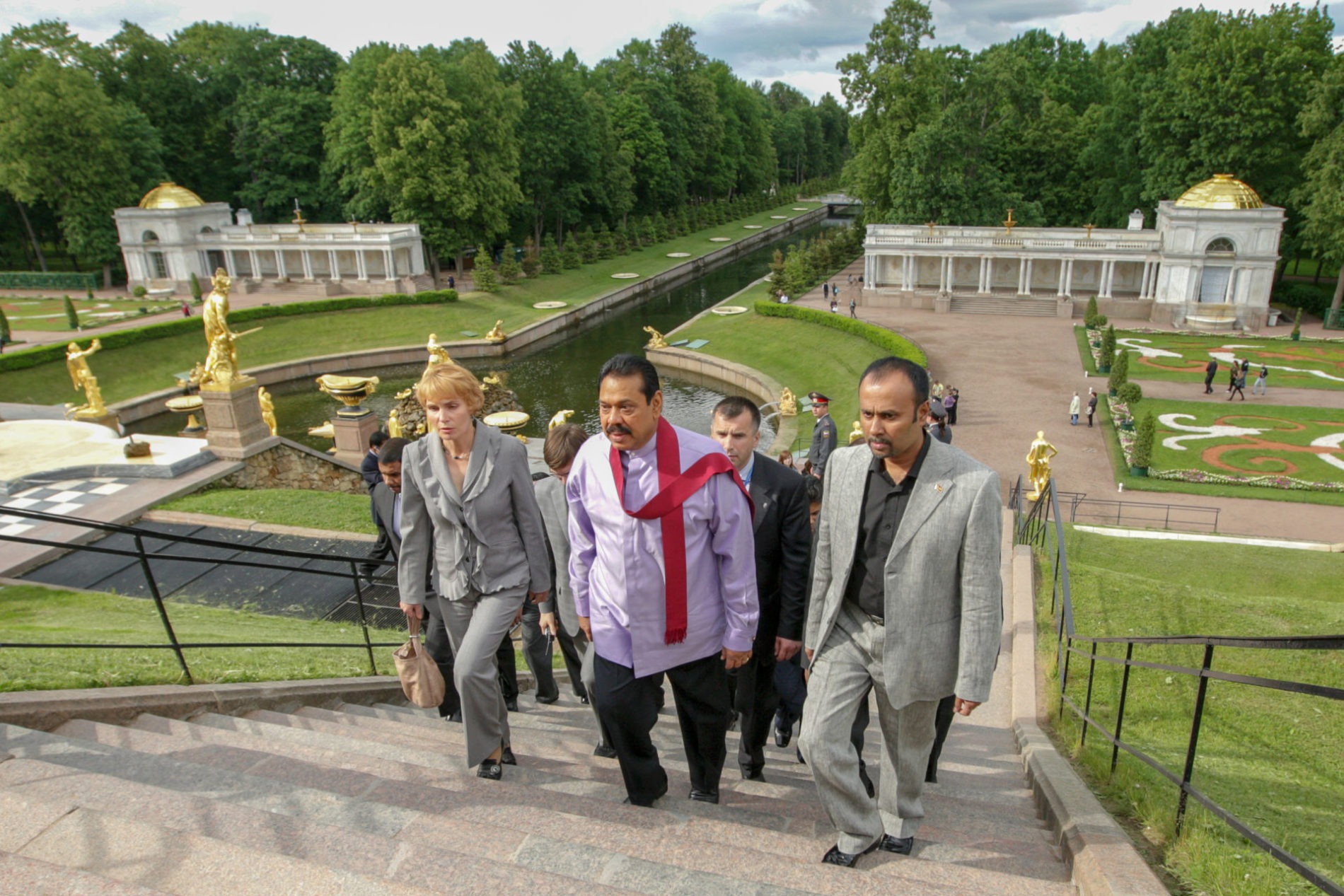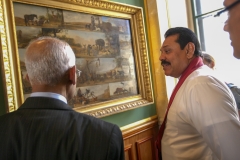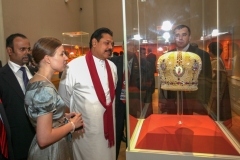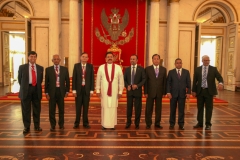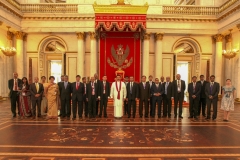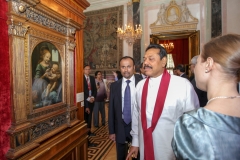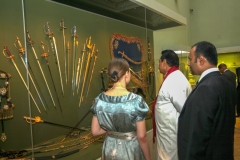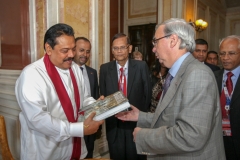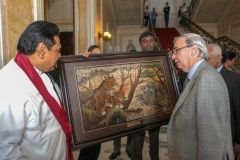President visits Hermitage and Petrodvorets
16 & 18th June 2011
President Rajapaksa also visits Hermitage & Peterhof.
State Hermitage
Founded by Tsar Peter the Great on May 27, 1703, Saint Petersburg was capital of the Russian Empire for more than two hundred years (1712–1728, 1732–1918). St. Petersburg ceased being the capital in 1918 after the Russian Revolution of 1917. The collection of the State Hermitage includes more than three million works of art and artefacts of the world culture. Among them are paintings, graphic works, sculptures and works of applied art, archaeological finds and numismatic material. The main architectural ensemble of the Hermitage situated in the centre of St Petersburg consists of the Winter Palace, the former state residence of the Russian emperors, the buildings of the Small, Old (Great) and New Hermitages, the Hermitage Theatre and the Auxiliary House. The museum complex also includes the Menshikov Palace and the Eastern Wing of the General Staff building, the Staraya Derevnya Restoration and Storage Centre and the Museum of the Imperial Porcelain Factory
Peterhof
One of St. Petersburg’s most famous and popular visitor attractions, the palace and park at Peterhof (also known as Petrodvorets) are often referred to as “the Russian Versaille”, although many visitors conclude that the comparison does a disservice to the grandeur and scope of this majestic estate. Versailles was, however, the inspiration for Peter the Great’s desire to build an imperial palace in the suburbs of his new city and, after an aborted attempt at Strelna, Peterhof – which means “Peter’s Court” in German – became the site for the Tsar’s Monplaisir Palace, and then of the original Grand Palace. The estate was equally popular with Peter’s granddaughter, Empress Elizabeth, who ordered the expansion of the Grand Palace and greatly extended the park and the famous system of fountains, including the truly spectacular Grand Cascade. Improvements to the park continued throughout the 18th and 19th centuries. Catherine the Great, after leaving her own mark on the park, moved the court to Pushkin, but Peterhof once again became the official Imperial Residence in the reign of Nicholas I, who ordered the building of the modest Cottage Palace in 1826. Like almost all St. Petersburg’s suburban estates, Peterhof was ravaged by German troops during the Second World War. It was, however, one of the first to be resurrected and, thanks to the work of military engineers and over 1,000 volunteers, most of the estate’s major structures had been fully restored by 1947. The name was also de-Germanicized after the war, becoming Petrodvorets, the name under which the surrounding town is still known. The palace and park are once again known as Peterhof.



